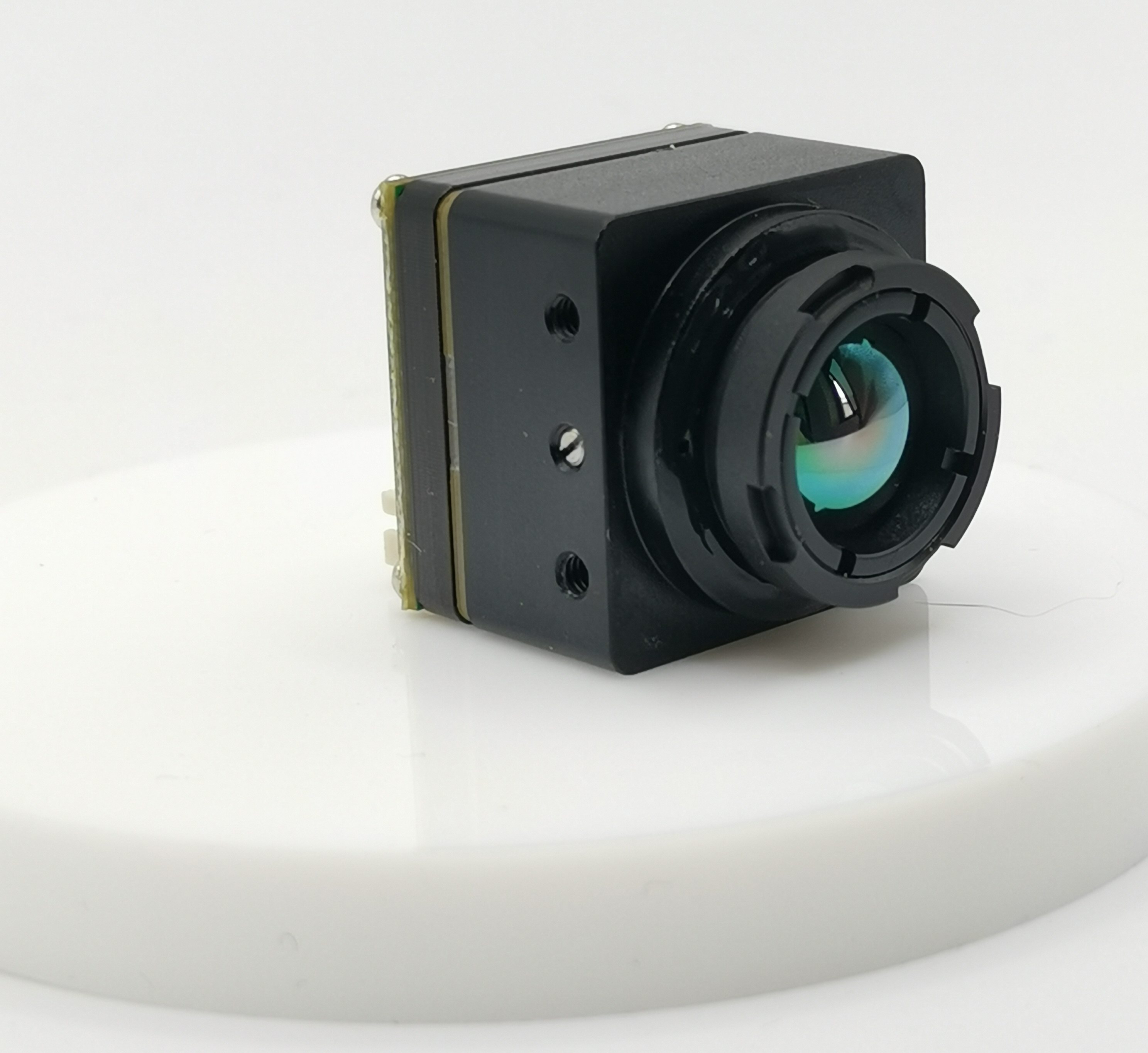Analog FPV Thermal Camera vs. Drone with Thermal Camera: Unveiling the iSun FPV Difference

Exploring the World of Thermal Imaging
Thermal imaging, also known as thermography, is a technology that captures the heat emitted by objects and creates a visual representation based on temperature variations. This process relies on infrared radiation, allowing for the detection of differences in temperature.
The Basics of Thermal Imaging
How Thermal Imaging Works
Thermal imaging works by using specialized cameras to detect infrared radiation emitted by objects. These cameras then convert the detected radiation into an electronic signal, which is processed to create a thermal image. The resulting image displays varying colors or shades to represent different temperatures, providing valuable insights into the thermal characteristics of the objects being observed.
Applications of Thermal Imaging
The applications of thermal imaging are diverse and impactful. From identifying heat loss in buildings to detecting anomalies in electrical systems, thermal imaging plays a crucial role in various industries such as construction, maintenance, firefighting, and healthcare. Additionally, it is widely used in security and surveillance systems for its ability to detect human presence based on body heat.
The Evolution of Thermal Imaging Technology
From Bulky Systems to Portable Solutions
Historically, thermal imaging systems were large and cumbersome, limiting their accessibility. However, advancements in technology have led to the development of compact and portable thermal imaging devices that offer greater flexibility and ease of use.
The Rise of FPV in Thermal Imaging
First Person View (FPV) technology has revolutionized thermal imaging by enabling real-time transmission of thermal data to remote displays or goggles. This innovation has empowered users to gain immediate insights from aerial or ground-based thermal imaging devices, enhancing situational awareness and operational efficiency.
Analog FPV Thermal Cameras: A Closer Look
Now, let's delve into the specifics of analog FPV thermal cameras and gain a deeper understanding of their key features, as well as the advantages and disadvantages they offer.
Understanding Analog FPV Thermal Cameras
Key Features of Analog FPV Thermal Cameras
Analog FPV thermal cameras are designed to capture infrared radiation emitted by objects and translate it into visible images based on temperature variations. These cameras are equipped with specialized sensors that can detect even the slightest differences in temperature, allowing for precise thermal imaging. The real-time transmission capability of analog FPV thermal cameras enables users to receive live thermal data, providing immediate insights into temperature differentials across various surfaces or environments.
Pros and Cons of Using Analog FPV Thermal Cameras
When considering the use of analog FPV thermal cameras, it's essential to weigh their advantages and limitations. One significant advantage is their compatibility with existing First Person View (FPV) systems, allowing for seamless integration into aerial or ground-based applications. Additionally, these cameras offer real-time thermal imaging capabilities, enhancing situational awareness and operational efficiency. However, one limitation is that analog FPV thermal cameras may have lower resolution compared to digital alternatives, potentially impacting the clarity of thermal images.
Price Range and Market Options
Factors Influencing the Price of Analog FPV Thermal Cameras
The price range of analog FPV thermal cameras can vary based on several factors, including resolution, range, additional features such as image stabilization or data recording capabilities, and brand reputation. Higher resolution and extended range capabilities often contribute to a higher price point due to the advanced technology required to achieve these specifications.
How to Find a Good Deal
When seeking a good deal on analog FPV thermal cameras, it's crucial to consider the specific requirements for your intended applications. Researching reputable manufacturers known for producing high-quality thermal imaging devices can help identify reliable options. Additionally, exploring customer reviews and seeking recommendations from industry professionals can provide valuable insights into finding cost-effective yet reliable analog FPV thermal camera solutions.
Drones with Thermal Cameras: Advantages and Price Considerations
Drones equipped with thermal cameras offer a myriad of advantages, making them valuable tools across diverse industries. Their enhanced mobility and accessibility, coupled with their ability to capture thermal data from unique vantage points, contribute to their widespread use in various applications.
Why Choose a Drone with a Thermal Camera?
Enhanced Mobility and Accessibility
One of the primary reasons to opt for a drone with a thermal camera is the unparalleled mobility it provides. These aerial platforms can access hard-to-reach or hazardous areas, allowing for comprehensive thermal inspections of structures, landscapes, and infrastructure. The ability to navigate through challenging terrains and aerially survey large areas makes drones an indispensable asset for tasks such as search and rescue operations, wildlife monitoring, and infrastructure maintenance.
Use Cases for Drones with Thermal Cameras
The versatility of drones with thermal cameras extends to numerous practical applications. In agriculture, they aid in crop management by detecting variations in plant health and irrigation patterns. Furthermore, in public safety and law enforcement, drones are utilized for locating missing persons or suspects based on their body heat signatures. Additionally, these aerial systems play a crucial role in industrial inspections by identifying equipment malfunctions or energy inefficiencies through thermal imaging.
Analyzing the Drone with Thermal Camera Price
What Affects the Price of Drones with Thermal Cameras?
Several factors influence the pricing of drones with thermal cameras, including the quality of the camera sensor, flight capabilities, battery life, and additional features such as obstacle avoidance systems or GPS functionality. Higher resolution sensors and advanced flight technologies contribute to an increased price point due to their enhanced performance capabilities.
Comparing Prices: Drones vs. Standalone Cameras
When comparing the prices of drones with thermal cameras to standalone thermal imaging devices, it's essential to consider the added value of aerial mobility. While standalone cameras may offer competitive pricing based on their specifications alone, drones provide unparalleled flexibility in capturing dynamic thermal data from varying altitudes and angles.
The iSun FPV Thermal Camera Difference
Introducing the iSun FPV Thermal Camera
The iSun FPV thermal camera represents a cutting-edge advancement in thermal imaging technology, offering a host of unique features and capabilities that set it apart from traditional analog FPV thermal cameras. This innovative device is designed to provide users with unparalleled thermal imaging performance and versatility.
Unique Features and Capabilities
The iSun FPV thermal camera boasts several distinctive features that contribute to its exceptional functionality. With high-resolution thermal sensors, it delivers detailed and precise thermal imagery, enabling users to discern temperature differentials with remarkable clarity. Additionally, its compact and lightweight design enhances portability, making it suitable for diverse applications ranging from aerial inspections to ground-based surveillance. The integration of First Person View (FPV) technology ensures real-time transmission of thermal data, empowering users with immediate insights into temperature variations across various environments.
Why the iSun FPV Stands Out
What truly sets the iSun FPV thermal camera apart is its seamless compatibility with existing FPV systems, allowing for effortless integration into aerial platforms such as drones or unmanned aerial vehicles (UAVs). This compatibility extends the utility of the iSun FPV across different operational scenarios, from aerial reconnaissance missions to infrastructure assessments. Furthermore, its user-friendly interface and intuitive controls make it accessible to both seasoned professionals and enthusiasts seeking high-quality thermal imaging solutions.
Price and Performance: A Comprehensive Comparison
When evaluating the value proposition of the iSun FPV thermal camera, it's essential to consider its performance relative to other analog FPV thermal cameras as well as drones equipped with thermal imaging capabilities.
iSun FPV vs. Other Analog FPV Thermal Cameras
In comparison to other analog FPV thermal cameras, the iSun FPV stands out due to its advanced features such as higher resolution sensors, real-time transmission capability, and enhanced portability. These attributes contribute to superior image quality and operational flexibility, positioning the iSun FPV as a compelling choice for professionals seeking top-tier performance in their thermal imaging endeavors.
iSun FPV vs. Drones with Thermal Cameras
Compared to drones equipped with integrated thermal cameras, the iSun FPV offers distinct advantages in terms of versatility and adaptability. While drones provide aerial mobility for capturing dynamic thermal data from varying altitudes and angles, the standalone nature of the iSun FPV allows for seamless integration into existing platforms without imposing additional flight considerations or restrictions.
Final Thoughts: Choosing the Right Option for You
Summing Up the Differences
After exploring the world of thermal imaging and comparing analog FPV thermal cameras with drones equipped with thermal cameras, it's essential to consider the key differences to make an informed decision.
Key Takeaways
Mobility and Accessibility: Drones with thermal cameras offer unparalleled mobility, providing access to hard-to-reach areas for comprehensive inspections. On the other hand, analog FPV thermal cameras are seamlessly integrated into existing platforms, offering real-time transmission of thermal data.
Image Quality and Resolution: The iSun FPV thermal camera stands out with its high-resolution sensors, delivering detailed and precise thermal imagery. Drones may provide dynamic aerial perspectives, while standalone analog FPV cameras offer immediate insights into temperature variations across various surfaces.
Price Considerations: When evaluating pricing, it's crucial to weigh the added value of aerial mobility provided by drones against the advanced features and portability offered by devices like the iSun FPV thermal camera.
Personal Recommendations
Considering your specific needs and operational requirements, if you prioritize versatility and adaptability in capturing thermal data from varying altitudes and angles, a drone with a thermal camera may be the ideal choice. However, if seamless integration into existing platforms and high-quality image resolution are paramount, the iSun FPV thermal camera presents a compelling option for achieving exceptional performance in thermal imaging endeavors.
See Also
Comparing Analog FPV Thermal Cameras for Drones in Detail
Benefits of Analog FPV Thermal Cameras for Drones
Analog FPV Thermal Camera: Revolutionizing Drone Tech and Surveillance
Benefits of Analog FPV Thermal Cameras for DJI Drones
Optimizing Drone Performance with Analog FPV Thermal Cameras
Contact Us: Ms. Coco Huang
E-mail: sales@iasun.cn
WhatsApp/Wechat: +86 13510421923

